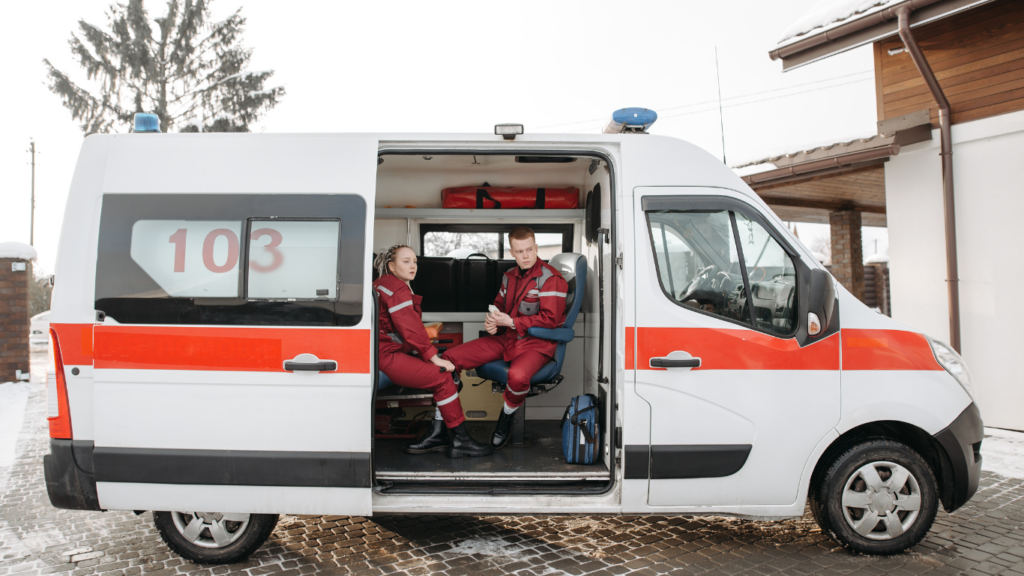In the fast-paced world of emergency response, every second counts. Imagine a tool that can provide real-time information and enhance decision-making on the front lines. That’s where Augmented Reality (AR) steps in, revolutionizing how we approach emergencies.
AR technology is not just for gaming or entertainment; it’s a powerful asset in critical situations. From visualizing disaster scenarios to mapping out escape routes, AR offers a new dimension to emergency response strategies.
As an expert in the field, I’ve witnessed firsthand the transformative impact of AR on saving lives and improving response efficiency. Join me as we delve into the real-time applications of AR for emergency response, exploring how this cutting-edge technology is reshaping the way we handle crises.
Get ready to discover the future of emergency management through the lens of Augmented Reality.
Importance of AR in Emergency Response
Enhancing emergency response with Augmented Reality (AR) technology is crucial in modern disaster management. AR offers real-time applications that can significantly improve response times and decision-making processes during crises.
As an expert in the field, I recognize the pivotal role AR plays in visualizing disaster scenarios and mapping escape routes accurately, ultimately leading to more efficient and effective emergency responses. AR technology has proven to be a game-changer in emergency situations, enabling responders to access critical information instantly, thereby saving crucial time and potentially saving lives.
Current Real-Time Applications of AR
- Real-Time Solutions:
AR technology provides immediate information and guidance, enhancing decision-making processes during emergency response efforts. - Revolutionizing Applications:
AR is transforming how responders interact with and manage emergency situations, improving overall effectiveness and efficiency.
Navigation Assistance
I leverage AR technology to provide accurate navigation assistance during emergencies. By overlaying virtual markers and directional cues onto the real-world environment, individuals can easily locate emergency exits, assembly points, and other vital locations in crisis situations.
This real-time guidance ensures swift and safe evacuation procedures, optimizing response times and overall safety.
On-Site Hazard Identification
Using AR, I am able to identify on-site hazards quickly and efficiently. By superimposing digital information onto the physical environment, AR technology helps me pinpoint potential dangers such as gas leaks, electrical hazards, or structural instabilities.
This immediate visualization of risks empowers responders to make informed decisions promptly, mitigating threats and safeguarding both responders and affected individuals in real time.
Challenges in Implementing AR for Emergency Response
Addressing challenges in implementing Augmented Reality (AR) for emergency response is vital to ensure the effectiveness of this technology in critical situations.
Limited Field Testing Opportunities
Inadequate real-world testing environments may hinder the development and validation of AR applications for emergency response scenarios. Conducting comprehensive field tests is essential to refine AR systems and ensure their reliability under diverse conditions.
Technical Constraints
Compatibility issues with existing hardware and software could pose significant obstacles to the seamless integration of AR tools in emergency response protocols. Overcoming technical limitations requires consistent updates and refinements to keep pace with rapid advancements in AR technology.
Data Security Concerns
Safeguarding sensitive information transmitted and processed through AR systems is essential to protect the privacy and confidentiality of emergency response operations. Implementing robust encryption measures and secure data storage protocols is crucial to mitigate potential security risks associated with AR usage in emergency scenarios.
Training and Adoption Challenges
Providing comprehensive training programs for emergency responders on using AR technologies effectively is crucial for successful implementation. Overcoming resistance to change and ensuring widespread adoption of AR tools necessitate proactive education and awareness campaigns within emergency response organizations.
Cost Implications
The initial investment and ongoing maintenance costs associated with AR technologies could present financial challenges for emergency response agencies. Conducting cost-benefit analyses and exploring potential funding sources are essential steps in addressing the financial implications of integrating AR into emergency response strategies.
By proactively addressing these challenges, stakeholders can maximize the benefits of AR technology in emergency response scenarios and enhance the overall efficiency and effectiveness of response efforts.
Future Prospects of AR in Emergency Response
Expanding the utilization of Augmented Reality (AR) in emergency response holds promising opportunities for enhancing operational efficiency and effectiveness in critical situations. With continuous advancements in AR technology, the future landscape of emergency response is set to witness significant transformations.
I believe that the integration of AR tools will revolutionize the way emergency responders handle complex scenarios, providing them with vital real-time information and resources at their fingertips. I anticipate that future applications of AR in emergency response will encompass a broader spectrum of functionalities beyond navigation assistance and hazard identification.
Innovations in AR software and hardware are likely to introduce features such as remote assistance, object recognition, and augmented communication platforms, empowering responders with comprehensive situational awareness and collaboration capabilities. As the field of AR matures, I expect to see a surge in the development of custom-tailored AR solutions designed specifically for emergency response teams.
These specialized tools will streamline coordination efforts, optimize resource allocation, and facilitate seamless communication channels among responders, ultimately leading to quicker response times and more efficient crisis management. Furthermore, advancements in data analytics and artificial intelligence are projected to enhance the predictive capabilities of AR systems in emergency response scenarios.
By leveraging data-driven insights and predictive modeling, AR applications can anticipate potential risks, optimize response strategies, and mitigate challenges proactively, minimizing the impact of emergencies and safeguarding lives and property. The future prospects of AR in emergency response are exciting, with the technology poised to become an indispensable asset for emergency management agencies worldwide.
By embracing these advancements and fostering a culture of innovation and adaptation, emergency responders can harness the full potential of AR to navigate complex emergencies with precision, agility, and effectiveness.



